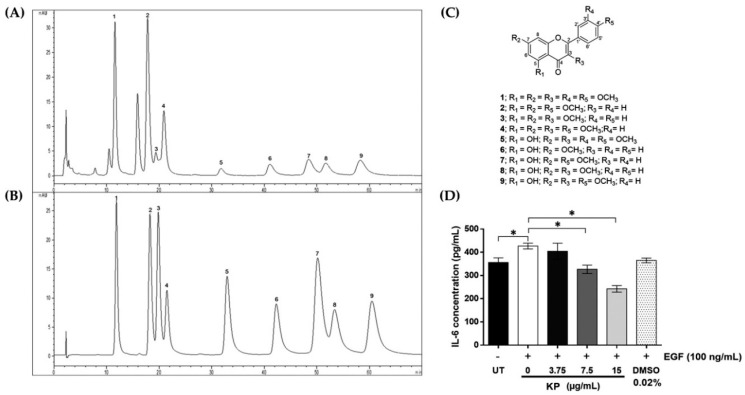Figure 1.
(A) High performance liquid chromatograph (HPLC) chromatogram of Kaempferia parviflora (KP) ethanolic extract; (B) HPLC chromatogram of mixed standard methoxyflavones 1 to 9; (C) the structure of standard compounds from KP; 3,5,7,3′,4′-pentamethoxyflavone (1), 5,7,4′-trimethoxyflavone (2), 3,5,7-trimethoxyflavone (3), 3,5,7,4′-tetramethoxyflavone (4), 5-hydroxy-3,7,3′,4′-tetramethoxyflavone (5), 5-hydroxy-7-methoxyflavone (6), 5-hydroxy-7,4′-dimethoxyflavone (7), 5-hydroxy-3,7-dimethoxyflavone (8), and 5-hydroxy-3,7,4′-trimethoxyflavone (9) elucidated by nuclear magnetic resonance spectroscopy; (D) IL-6 concentration (pg/mL) in the culture supernatants of HeLa cells treated with different concentrations of KP extract (0–15 µg/mL) for 24 h as measured by enzyme-linked immunosorbent assay (ELISA). The maximum concentration of dimethyl sulfoxide (DMSO) at 0.02% was used as a vehicle control. Data represent mean ± SD of three independent experiments. * p < 0.05. EGF, epidermal growth factor.

